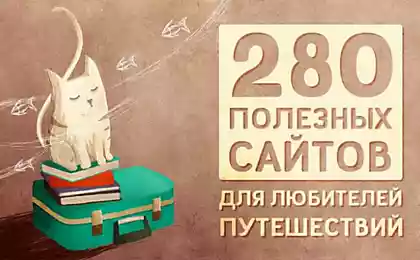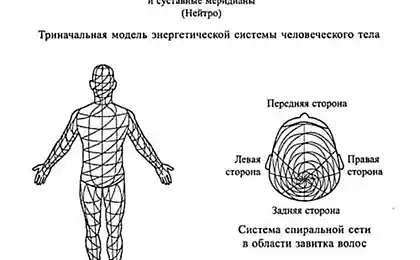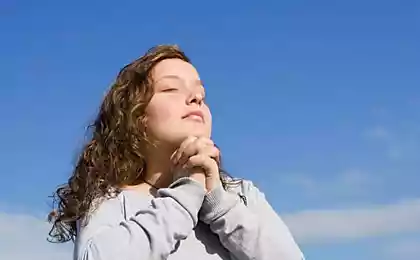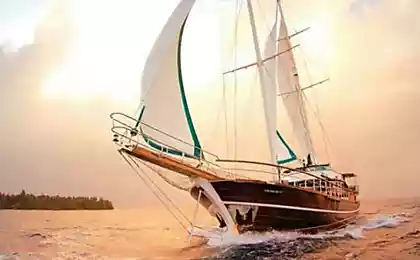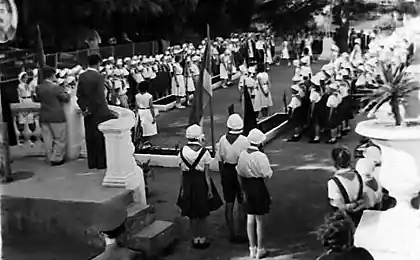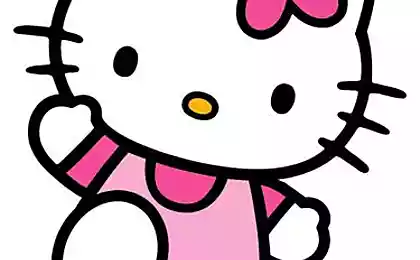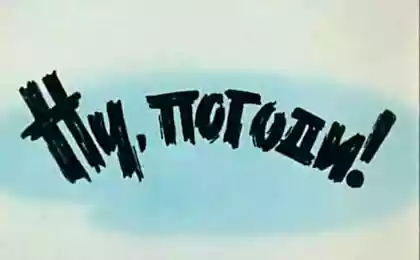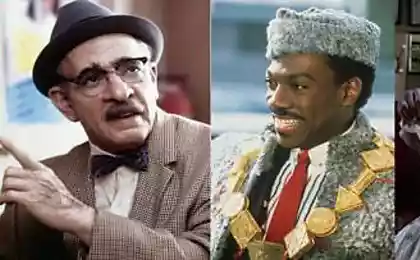858
Seven characters that have become symbols of different countries
March 13, 1852 in New York NY Lantern Weekly newspaper appeared the first image of Uncle Sam. The traditional image of Uncle Sam created by artist Thomas Nast in a series of political cartoons that were published in the second half of the XIX century. This character we associate with the image of the United States. But it was not the only such character. In other countries, too, have their own symbols.
7 photo source.
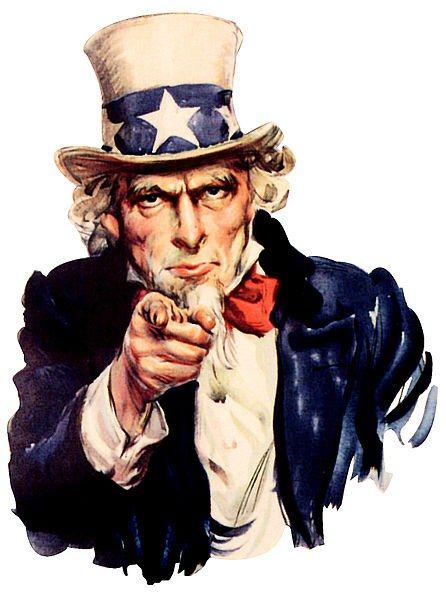
Uncle Sam
Uncle Sam - the image of the United States, which emerged during the 1812 war. The prototype of the famous picture - the butcher Samuel Wilson, who supplied the US military base at Troy barrels of meat. These barrels were marked with US - which meant the United States, but the soldiers came up with a comedic interpretation: Uncle Sam (Uncle Sam). A March 13, 1852 in a New York newspaper published the first image of cartoons of Uncle Sam, the artist was Thomas Nast.
In 1917, the artist was painted by James Flagg poster which was used to recruit soldiers in the First and Second World War. It is on this poster Uncle Sam is officially America's image and "encouraged" to join the ranks of the army, with the pointing finger poster. Now the image has acquired a deeper meaning and became associated with the "conscience of the nation." There are even new version of Uncle Sam in more modern garb, but the same attributes of his wardrobe, as well as more than 200 years ago, is an old-fashioned hat and beard.

Ola Nordmann
Ola Nordmann - the personification of Norway. Cartoons on Ola Nordmann is very common in Norway, the most famous of them - the 1905 cartoon artist Olaf Kronora on which the Norwegian Ola carries on the back load two referendums held in those years, and Europe in the distance laughing at him.
The exact date of the appearance of this character is unknown. Name Ola - the most common male name in Norway, and Nordmann - the ancient name of the Norwegians. Usually he is portrayed blonde dressed in national costume bunad and red woolen cap on his head. He even has a "wife" - Kari Nordmann, together they represent a classic Norwegian family. This image is so popular in Norway that the media can find a replacement name of the hero of the nation, such as "Ola Nordmann has become more than a walk" instead of "The Norwegians have become more than a walk." Also, it is the official name of the sample to complete the questionnaire, as in Russia Ivan Ivanov.

Marianne
Marianne - a national symbol, and the unofficial nickname of France. It arose even during the French Revolution in 1792. His appearance it owes to the National Assembly of France, which in 1792 decided that the new seal of France should be in the image of a woman wearing a Phrygian cap and with a spear in his hand. Phrygian cap - the image of freedom in the Roman Empire it was worn freed slaves.
The most famous image of Marianne made by the artist Delacroix, he wrote in 1830 painting "Liberty on the barricades." When in 1848 the Ministry of Interior announced a competition for the best symbol of France - it was the image of Marianne. And since 1970 in France, a new tradition - every year to elect a prototype Marianna most beautiful and famous women of the country. Who is the image used on the French Marianne cents denominations of 1, 2 and 5.
John Bull
John Bull - the national image of the United Kingdom and the British. He first appeared in 1727 in a pamphlet by John Arbuthnot "History of John Bull." The truth is that the image has not been adopted unanimously by the entire population of Great Britain, it has not been adopted in Scotland and Wales. He is represented by a fat man of medium height, dressed in white trousers whether leggings, and always with magnificent whiskers. He also often holds a spyglass by means of which a distance watching events in Europe. It is also apparent antithesis of the American Uncle Sam, who, on the contrary, tall and lean.
The greatest popularity of this character has gained after the publication of the play "John Bull, or family life Englishman", written in 1803 by John Coleman. Also, his image has been used in a recruiting poster of World War I, where he was shown to his full height, and as Uncle Sam poster shows a finger
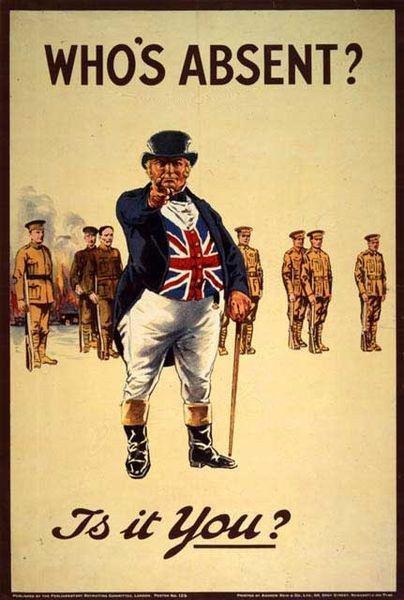
Srulik
Srulik - a character who is a national personification of the people of Israel. Its very name comes from the diminutive "Israel" in Yiddish. But the appearance of this character is very different from the usual stereotyping of Jews.
Usually he is dressed in a shirt and shorts, "biblical" sandals on his head kibbutz Panama. This image first appeared in 1956 in the famous Israeli artist caricatures Kariel Gardosha.
Srulik - character large number of cartoons and caricatures, the last of which the artist did not finish on the day of his death, in 2000. Image Srulik also been immortalized on a postage stamp issued in honor of the 50th anniversary of Israel in 1997. It is interesting that during the military conflict character often portrayed in uniform.
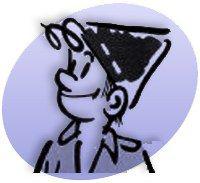
Boxing kangaroo
Boxing kangaroo - the national symbol of Australia's image. The image of the boxing kangaroo first appeared in 1891 in one of the Sydney newspapers. Kangaroo depicted boxing because during the fight with the enemy is the animal trying to push your opponent's first paws that resembles punches (jab) in boxing.
The German films of 1895 and in 1896 the image of a kangaroo appeared as the embodiment of Australia. Later in America began to leave short film that finally secured the image of boxing kangaroo for Australia. As this symbol is the official mascot of the sports represented at the Australian and boxing gloves.
During the Second World War boxing kangaroo has become a symbol of the Air Force of Australia.
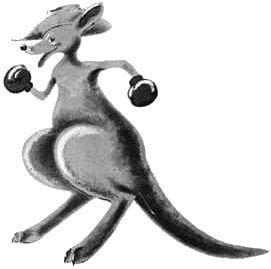
John Kannuk
Johnny Kannuk - the official image of the character of Canada. He first appeared on the political caricature in 1869, where he was depicted as a young cousin of Uncle Sam and John Bull. He was dressed as a simple villager and often associated with a simple and good-natured farmer who resisted Uncle Sam and Buļļu.
Then of it safely forgotten and remembered only during the Second World War. In February 1942, there was a comic drawn by famous cartoonist Leo Bahla. In this comic strip was then released a cartoon, in which John saved the world, meeting with Hitler and defeating him alone. In the mid-20th century it became the mascot of the Vancouver Canucks hockey team, which used the image of John as a woodcutter in its logo. Logo Lumberjack Johnny and now used the hockey team.

Source:
7 photo source.

Uncle Sam
Uncle Sam - the image of the United States, which emerged during the 1812 war. The prototype of the famous picture - the butcher Samuel Wilson, who supplied the US military base at Troy barrels of meat. These barrels were marked with US - which meant the United States, but the soldiers came up with a comedic interpretation: Uncle Sam (Uncle Sam). A March 13, 1852 in a New York newspaper published the first image of cartoons of Uncle Sam, the artist was Thomas Nast.
In 1917, the artist was painted by James Flagg poster which was used to recruit soldiers in the First and Second World War. It is on this poster Uncle Sam is officially America's image and "encouraged" to join the ranks of the army, with the pointing finger poster. Now the image has acquired a deeper meaning and became associated with the "conscience of the nation." There are even new version of Uncle Sam in more modern garb, but the same attributes of his wardrobe, as well as more than 200 years ago, is an old-fashioned hat and beard.

Ola Nordmann
Ola Nordmann - the personification of Norway. Cartoons on Ola Nordmann is very common in Norway, the most famous of them - the 1905 cartoon artist Olaf Kronora on which the Norwegian Ola carries on the back load two referendums held in those years, and Europe in the distance laughing at him.
The exact date of the appearance of this character is unknown. Name Ola - the most common male name in Norway, and Nordmann - the ancient name of the Norwegians. Usually he is portrayed blonde dressed in national costume bunad and red woolen cap on his head. He even has a "wife" - Kari Nordmann, together they represent a classic Norwegian family. This image is so popular in Norway that the media can find a replacement name of the hero of the nation, such as "Ola Nordmann has become more than a walk" instead of "The Norwegians have become more than a walk." Also, it is the official name of the sample to complete the questionnaire, as in Russia Ivan Ivanov.

Marianne
Marianne - a national symbol, and the unofficial nickname of France. It arose even during the French Revolution in 1792. His appearance it owes to the National Assembly of France, which in 1792 decided that the new seal of France should be in the image of a woman wearing a Phrygian cap and with a spear in his hand. Phrygian cap - the image of freedom in the Roman Empire it was worn freed slaves.
The most famous image of Marianne made by the artist Delacroix, he wrote in 1830 painting "Liberty on the barricades." When in 1848 the Ministry of Interior announced a competition for the best symbol of France - it was the image of Marianne. And since 1970 in France, a new tradition - every year to elect a prototype Marianna most beautiful and famous women of the country. Who is the image used on the French Marianne cents denominations of 1, 2 and 5.
John Bull
John Bull - the national image of the United Kingdom and the British. He first appeared in 1727 in a pamphlet by John Arbuthnot "History of John Bull." The truth is that the image has not been adopted unanimously by the entire population of Great Britain, it has not been adopted in Scotland and Wales. He is represented by a fat man of medium height, dressed in white trousers whether leggings, and always with magnificent whiskers. He also often holds a spyglass by means of which a distance watching events in Europe. It is also apparent antithesis of the American Uncle Sam, who, on the contrary, tall and lean.
The greatest popularity of this character has gained after the publication of the play "John Bull, or family life Englishman", written in 1803 by John Coleman. Also, his image has been used in a recruiting poster of World War I, where he was shown to his full height, and as Uncle Sam poster shows a finger

Srulik
Srulik - a character who is a national personification of the people of Israel. Its very name comes from the diminutive "Israel" in Yiddish. But the appearance of this character is very different from the usual stereotyping of Jews.
Usually he is dressed in a shirt and shorts, "biblical" sandals on his head kibbutz Panama. This image first appeared in 1956 in the famous Israeli artist caricatures Kariel Gardosha.
Srulik - character large number of cartoons and caricatures, the last of which the artist did not finish on the day of his death, in 2000. Image Srulik also been immortalized on a postage stamp issued in honor of the 50th anniversary of Israel in 1997. It is interesting that during the military conflict character often portrayed in uniform.

Boxing kangaroo
Boxing kangaroo - the national symbol of Australia's image. The image of the boxing kangaroo first appeared in 1891 in one of the Sydney newspapers. Kangaroo depicted boxing because during the fight with the enemy is the animal trying to push your opponent's first paws that resembles punches (jab) in boxing.
The German films of 1895 and in 1896 the image of a kangaroo appeared as the embodiment of Australia. Later in America began to leave short film that finally secured the image of boxing kangaroo for Australia. As this symbol is the official mascot of the sports represented at the Australian and boxing gloves.
During the Second World War boxing kangaroo has become a symbol of the Air Force of Australia.

John Kannuk
Johnny Kannuk - the official image of the character of Canada. He first appeared on the political caricature in 1869, where he was depicted as a young cousin of Uncle Sam and John Bull. He was dressed as a simple villager and often associated with a simple and good-natured farmer who resisted Uncle Sam and Buļļu.
Then of it safely forgotten and remembered only during the Second World War. In February 1942, there was a comic drawn by famous cartoonist Leo Bahla. In this comic strip was then released a cartoon, in which John saved the world, meeting with Hitler and defeating him alone. In the mid-20th century it became the mascot of the Vancouver Canucks hockey team, which used the image of John as a woodcutter in its logo. Logo Lumberjack Johnny and now used the hockey team.

Source:

